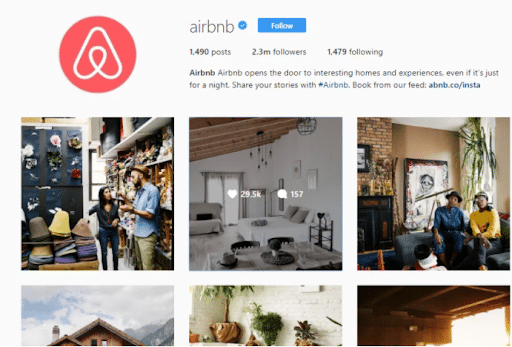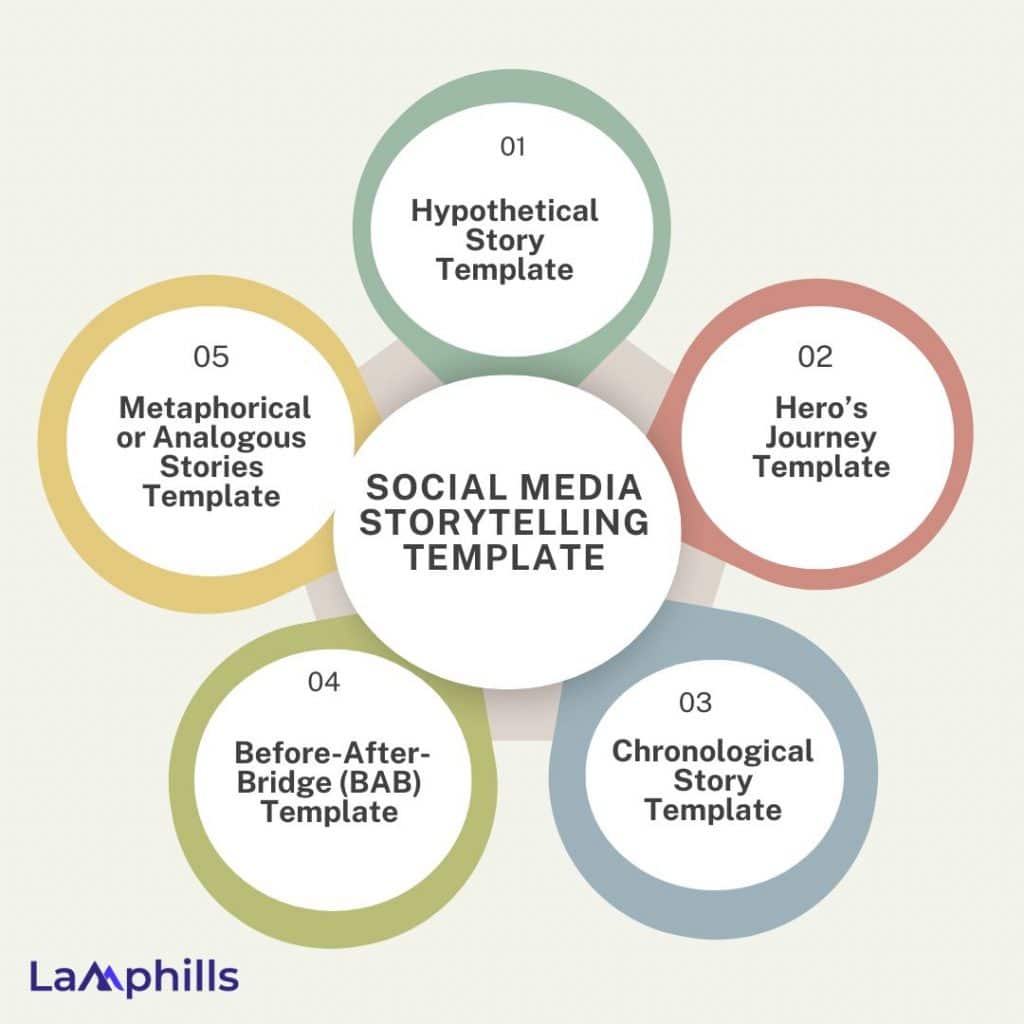Have you ever wondered why some brands captivate audiences effortlessly with their social media storytelling? It’s not just luck. Effective social media storytelling combines creativity and strategy. You know those moments when a story made you stop scrolling? That’s the power of social media storytelling.
In this article, I will discuss the best strategies for captivating your audience with social media storytelling and also explore how to create narratives that not only grab attention but also keep your audience coming back for more. By the end, you’ll have practical tips and examples to elevate your storytelling game.
Key Takeaways
- Good storytelling has a clear structure with characters, conflicts, and resolutions.
- The key to effective social media storytelling lies in authenticity and emotional appeal.
- Facebook supports long-form posts, photo albums, videos, and live streams, providing multiple formats for storytelling.
- Stories encourage people to engage because they want to be part of the narrative.
- By addressing current issues like travel restrictions during the pandemic, Airbus demonstrates its responsiveness to customer needs.
What is Storytelling?
First, I’d like to begin by explaining what storytelling is. Once, I had to present a marketing proposal to a client. Instead of listing statistics and strategies, I started with a story. I talked about a small business that struggled with low sales until it adopted my proposed strategies. I described their challenges, the steps they took, and the successful outcome. This storytelling approach made the presentation more engaging and relatable. The client saw the potential impact of the proposal, which led to approval.
Basically, storytelling is the act of using words and actions to create and share a story. It involves a sequence of events or experiences that engage and captivate an audience.
Storytelling connects people. When you tell a story, you draw others into your world, making them feel and understand your experiences. Also, a good story has a clear beginning, middle, and end. It often includes characters, conflicts, and resolutions. Storytelling can entertain, inform, and inspire.
Social Media Storytelling
Social media storytelling involves using platforms like Facebook, Instagram, or YouTube to narrate compelling tales that resonate with your audience. It’s not just about pushing products; it’s about crafting narratives that connect on a deeper level. For instance, when I managed social media for a local bakery, we didn’t just post about our new pastries. Instead, we shared stories of how our recipes were passed down through generations, adding warmth and authenticity to our brand.
Imagine a fitness trainer sharing their journey from overweight to fit, using Instagram to document every milestone and struggle. Or a nonprofit organization on Facebook recounting how they changed lives through their projects. These are stories that inspire, educate, and build a genuine connection with followers.
In addition, the key to effective social media storytelling lies in authenticity and emotional appeal. By weaving narratives with a beginning, middle, and meaningful conclusion, brands can create engaging content that goes beyond mere promotion. This approach allows audiences to relate personally, fostering trust and loyalty over time.
Social Media Storytelling Examples
Here are seven perfect examples of how leading brands use storytelling to connect, resonate, engage, and inspire their audience.
#1. Dove Social Media Storytelling

Dove, a personal care brand, tells powerful stories through its campaigns. Instead of celebrities, Dove uses real people. This makes their stories relatable. Dove’s campaigns often spark conversations and even controversies. However, the brand sticks to its message, showing that relatable stories matter. When starting your storytelling, focus on real-life struggles your customers face and offer solutions. This approach wins like Dove.
Dove’s approach is simple yet effective. By featuring everyday people, Dove creates a sense of authenticity. Their campaigns, like the “Real Beauty” campaign, celebrate natural beauty and challenge societal standards. This resonates deeply with their audience, making them feel seen and valued. For example, when Dove showcased women of different ages, sizes, and ethnicities, it sparked a global conversation about beauty standards. This type of storytelling not only promotes their products but also fosters a loyal community.
Key Takeaway: Focus on real people over celebrities to make your stories relatable.
#2. Nike Social Media Storytelling

Nike’s storytelling adds value to society. Their campaigns, like the Equality campaign, focus on issues like mental health and discrimination. Nike features athletes like Serena Williams and LeBron James. They use their influence to inspire action and support equality. Nike’s efforts show how brands can be powerful forces for social change. Find a cause your audience cares about and rally them around it, just like Nike.
Nike’s campaigns are more than just advertisements; they are calls to action. By addressing important social issues, Nike positions itself as a brand that cares about more than just selling products. Their “Just Do It” campaign, for instance, encourages people to push their limits and strive for greatness. When Nike supported Colin Kaepernick, it was a bold move that aligned with their values of equality and justice. This kind of storytelling creates a strong emotional connection with their audience, making them more than just customers but advocates for the brand.
Key Takeaway: Use influential figures and causes to inspire action and support social change.
#3. Intel Social Media Storytelling

Intel shares the story behind its brand on Instagram. They post images with captions about their company, founders, workers, and products. This builds trust and respect. Intel’s approach shows the importance of documenting achievements, failures, and milestones. These stories resonate with the audience. Use real stories to build a connection with your audience.
Intel’s storytelling humanizes the brand. By showcasing their employees and their journey, Intel makes their audience feel connected to the people behind the products. This transparency builds trust. For instance, Intel’s “She Will Connect” campaign highlights the importance of digital literacy for women in underserved areas. These stories not only promote Intel’s initiatives but also show their commitment to making a positive impact. Sharing behind-the-scenes moments and personal stories makes your brand more relatable and trustworthy.
Key Takeaway: Share the story behind your brand to build trust and respect.
#4. Airbus Social Media Storytelling

Airbus tells stories about making air travel safe and healthy. During the COVID-19 pandemic, they launched the Tripset app. This app gives real-time updates about flights and destinations, helping travelers plan their trips. Airbus shows how innovations can ease the lives of users. Highlight how your brand can make life easier for your audience. Make the story relevant and relatable.
Airbus uses storytelling to highlight its commitment to innovation and safety. By addressing current issues like travel restrictions during the pandemic, Airbus demonstrates its responsiveness to customer needs. The Tripset app story shows how they are making travel easier and safer. This approach not only promotes their technological advancements but also builds confidence in their brand. By focusing on how their innovations benefit customers, Airbus creates a narrative that is both informative and engaging.
Key Takeaway: Highlight innovations that solve real-world problems to engage your audience.
#5. Gillette Social Media Storytelling

Gillette’s campaigns often feature celebrities. One powerful campaign involved Shaquem Griffin, an NFL player who lost his left hand. Gillette’s message was about overcoming obstacles and becoming the best version of oneself. This personal and emotional connection engages the audience. Find an influential story and develop appealing content around it. This approach encourages and engages your audience.
Gillette’s use of personal stories from celebrities makes their campaigns impactful. By featuring Shaquem Griffin, they highlight themes of resilience and perseverance. This not only makes their products relatable but also inspires their audience. Gillette’s storytelling shows that its brand stands for more than just shaving products; it’s about confidence and overcoming challenges. This emotional connection encourages customer loyalty and engagement.
Key Takeaway: Use personal and emotional connections to engage and encourage your audience.
#6. Microsoft Teams Social Media Storytelling

During the Tokyo Olympics, Microsoft teams helped people experience the games from home. Since the event was closed to the public, Microsoft provided a new way to engage. This shows how offering resources and adapting to societal changes build trust. Show your audience that you care and are willing to meet their needs. This strategy strengthens your connection with them.
Microsoft teams used the unique situation of the Tokyo Olympics to create a relevant and engaging story. This initiative not only showcased Microsoft’s product capabilities but also demonstrated its commitment to supporting global events and community engagement. When developing your storytelling approach, consider how your brand can provide value and support to your audience, particularly during challenging or transformative times.
Key Takeaway: Adapt to societal changes and demonstrate care for your audience’s needs.
#7. Airbnb Social Media Storytelling

Airbnb’s storytelling focuses on the unique experiences shared by hosts and guests, showcasing the personal connections and memorable stays offered by their platform. By highlighting these authentic stories, Airbnb creates a narrative that resonates with travelers seeking personalized and meaningful experiences.
Incorporating customer stories into your own storytelling strategy can humanize your brand and build trust with your audience, emphasizing the unique benefits and experiences your brand offers.
Key Takeaway: Use user-generated content to showcase unique experiences and build authenticity.
Here is an infographic on the social media storytelling templates:

Social Media Storytelling Template
These templates provide a clear path to follow, making it easier to create stories that engage and resonate with audiences.
#1. Hypothetical Story Template
This template allows brands to engage their audience by presenting fictional yet plausible scenarios. By starting with an exaggerated situation that aligns with audience beliefs, followed by contrasting viewpoints, brands can capture attention and stimulate discussion.
This approach not only makes the content relatable but also encourages deeper engagement as readers explore different perspectives.
#2. Hero’s Journey Template
This classic storytelling framework takes the audience through a character’s transformative journey. The character faces challenges, often with help, and emerges stronger. The Hero’s Journey is perfect for brand storytelling. It can also shine in customer success stories and case studies, positioning customers as heroes and the brand as their guide.
The template of narrating a customer’s journey from problem to solution builds a strong emotional connection. The audience roots for the hero, sees their own potential for success and gains confidence in the brand’s ability to assist them.
#3. Chronological Story Template
This straightforward template narrates events in the order they happened. It starts with setting the scene, builds up to a turning point, and concludes with the end result. This method is excellent for telling brand stories, such as on an “About” page.
For instance, a company could chronicle its founding, the challenges it faced, and its eventual success. This template provides a clear and logical flow, helping the audience understand and connect with the brand’s journey.
#4. Before-After-Bridge (BAB) Template
This template shakes up the traditional order by starting with the backstory, jumping to the end, and then filling in the middle. It’s designed to pique curiosity and keep the audience engaged.
The BAB template is great for company news, announcements, and creating teasers for social media. For example, a company might announce a new product by first describing the problem it solves (Before), revealing the product and its benefits (After), and then detailing the development process and customer testimonials (Bridge). This method keeps the audience intrigued and eager to learn more.
#5. Metaphorical or Analogous Stories Template
This template uses metaphors and analogies to explain concepts. An unexpected metaphor can grab attention, while a strategic analogy can make complex ideas easier to understand.
This template is versatile and useful for short stories, infographics, and other formats needing clear and concise explanations. For instance, a marketer might compare their product to a well-known object or situation, making it easier for the audience to grasp its value. This approach not only simplifies complex ideas but also makes the content more engaging and memorable.
Creating a story structure helps ensure your narrative is coherent and engaging. Here’s a straightforward template you can use:
How Do You Become a Social Media Storyteller?
Becoming a social media storyteller involves a few key steps:
- Understanding Your Audience: The audience needs to be understood deeply. Their interests, challenges, and preferences should be researched. Stories are more relatable when they resonate with the audience’s experiences.
- Creating Authentic Stories: Authenticity is crucial. Real experiences, emotions, and insights should be shared. People feel more connected when the stories are genuine and reflect true feelings.
- Using Visual Content: Visuals such as images, videos, and infographics should be utilized. These elements grab attention and enhance the storytelling experience, making it more engaging.
- Maintaining a Consistent Voice and Tone: Consistency in voice and tone across all platforms is important. A recognizable and trustworthy brand is built this way, making it easier for the audience to connect with the storyteller.
- Engaging and Interacting: Engagement with the audience through comments, likes, and shares should be prioritized. Interaction makes the storytelling more dynamic and relatable, fostering a stronger connection with the audience.
- Adapting to Each Platform: Stories should be tailored to fit the platform being used. For instance, what works on Instagram might not work on LinkedIn. Adapting the content ensures that it is effective and well-received.
- Measuring and Improving: Engagement metrics should be tracked regularly. Data is used to refine storytelling techniques and improve future content, making the stories more impactful over time.
- Staying Updated: Staying updated with the latest social media trends is essential. Trends change rapidly, and keeping up ensures that the storytelling remains fresh and relevant.
What Social Media Platforms Are Used for Storytelling?
You can use any of the following social media platforms for effective storytelling:
#1. Instagram
Instagram allows users to share visual stories through photos, videos, and its Stories feature. The platform’s focus on visual content makes it ideal for engaging narratives.
#2. Facebook
Facebook supports long-form posts, photo albums, videos, and live streams, providing multiple formats for storytelling. Its diverse user base and various sharing options make it versatile for reaching a wide audience.
#3. TikTok
TikTok excels in short, creative video storytelling. Its algorithm promotes engaging and relatable content, making it a powerful tool for reaching younger audiences.
#4. YouTube
YouTube is perfect for longer video content, including vlogs, tutorials, and series. Its extensive reach and searchability help storytellers build and maintain a dedicated audience.
#5. Twitter
Twitter’s concise format is suitable for real-time updates and threading narratives. Hashtags and retweets enhance the storytelling experience by connecting with broader conversations.
#6. Snapchat
Snapchat’s Stories and Spotlight features are designed for ephemeral, engaging storytelling. It appeals to a younger audience, focusing on quick, visual content.
#7. LinkedIn
LinkedIn is effective for professional storytelling, sharing career experiences, and company narratives. Articles, posts, and videos cater to a professional audience looking for industry insights.
Each platform offers unique tools and audiences, making them suitable for different storytelling styles and objectives.
What Is the Power of Social Media Storytelling?
By sharing compelling narratives, you can build emotional connections, increase engagement, foster trust, define your brand identity, achieve viral reach, and simplify complex ideas. Here’s more explanation as to why social media storytelling is so powerful.
#1. Emotional Connection
When you tell a story, you’re not just sharing information—you’re creating an emotional bond. People are wired to respond to narratives. They remember stories far more easily than they do data or statistics. For example, instead of merely stating that your product helps people, share a customer’s journey where your product made a significant difference in their lives. This emotional connection fosters loyalty and turns customers into advocates.
#2. Engagement
A well-crafted story captures attention and invites interaction. Think about a time you read an intriguing post on social media. You probably liked it, commented, or even shared it with friends. Stories encourage people to engage because they want to be part of the narrative. For instance, a brand might share behind-the-scenes stories or user-generated content to make their audience feel included and valued.
#3. Trust Building
Authenticity is key in storytelling. When brands share real, honest stories, it builds trust. People appreciate transparency. Sharing customer testimonials, employee stories, or even company challenges makes your brand more relatable and trustworthy. Trust is a crucial element in customer relationships, leading to increased loyalty and positive word-of-mouth.
#4. Brand Identity
Your stories help define who you are as a brand. Consistent storytelling that aligns with your brand values and mission helps establish a strong identity. For example, if sustainability is a core value, sharing stories about your eco-friendly practices and initiatives reinforces this identity. Over time, your audience comes to associate your brand with these values, differentiating you from competitors.
#5. Virality Potential
Great stories have a high potential to go viral. When a story resonates, people want to share it. This amplifies your reach far beyond your immediate followers. Consider the “Share a Coke” campaign, where Coca-Cola replaced its logo with people’s names. This simple, yet powerful storytelling approach encouraged people to share their personalized Coke bottles on social media, driving massive engagement and brand exposure.
#6. Simplifies Complex Ideas
Stories make complex or dry information more digestible. Instead of overwhelming your audience with technical details or lengthy explanations, use a story to illustrate your point. For example, if you’re a tech company, rather than explaining the specs of a new product in technical jargon, tell a story about how it improved a user’s daily life. This makes your message clear and memorable.






